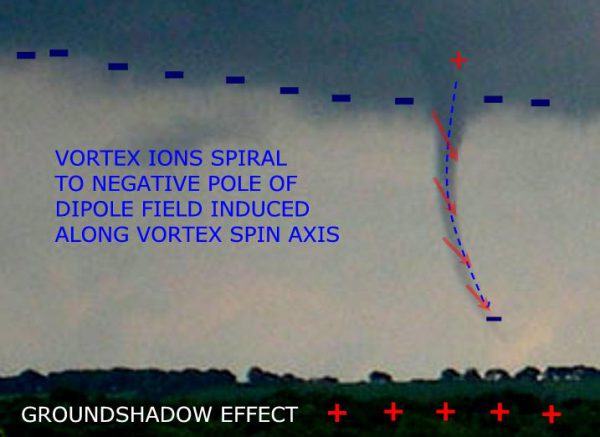|
TORNADO DYNAMICS Tornadoes happen after geomagnetic storms when the interface between the high density polar air mass and ambient mid latitude air mass is across the US midwest. The increase in charge density and repelling force between electrons in the electrified sectors of the auroral ovals powers a high velocity shock wave which increases barometric pressure and wind speed along the interface with the mid latitude air mass. May 13-1, 2013 – Sunspot AR1748 has produced an X1.7-class flare, an X2.8-class flare (1609 UT on May 13), an X3.2-class flare (0117 UT on May 14), an X1-class flare (0152 on May 15) and M3 Class solar flare and geoeffectice CME on May 17. These are the strongest flares of the year, signaling a significant increase in solar activity. May 18 -19, 2013 – Over the weekend, a pair of CMEs hit Earth. The geomagnetic storms sparked Northern Lights visible as far south as Colorado. Some of the brightest appeared over Cape Cod, Massachusetts.
May 20, 2013 – TORNADOES KILL 24 & INJURE 212 when an EF5 tornado ravaged Moore, Oklahoma, and adacent areas, with peak winds at 210 miles per hour, part of a larger system which produced several other tornadoes across the Great Plains over the previous two days, including five that struck portions of Central Oklahoma on May 19. The increase in wind speed after geomagnetic storms increases the momentum of moving storm cells and the Coreolis Force powers anticlockwise rotation of storm cells of ionized droplets which transform the angular momentum of moving charges into moments and sum of moments into a dipole field along the rotation axis which attracts cloud droplets toward the ground.
Electrified storm fronts charge cloud and ground surfaces with electrons which induce like charge in the same instant on field lines of twin phase electrons, draping cloud and ground surfaces between cycles. Like charges induced in the same instant are electrically repelled and electrified storm cells repel ground charge from rainshadow surfaces, inducing a voltage potential attracting cloud electrons to rainshadow surfaces.
When wind shear powers an anticlockwise vortex which transforms the momentum of spiralling charges into a field along the vortex rotation axis propogating the vortex toward the ground. When a vortex touches the ground circuits are opened between field lines draping cloud and ground surfaces.
The repelling force between ground charge powers a high amperage surge of ground charge up vortex field lines which transform the momentum of spiralling charges into moments which increases the attractive force of the dipole field directly as the current amperage, transforming the vortex into a tornado. JULY 9-11 2013 – GEOMAGNETIC STORMS & CIRCUMPOLAR AURORAS SEPT 30 2013 – HIGH SPEED GEOEFFECTIVE CME Dec 8th 2023 – SOLAR FLARE & EXTREME UV FLASH: June 15, 2023 – G2-CLASS GEOMAGNETIC STORM: March 23 2023 – 8 HOUR G3-CLASS GEOMAGNETIC STORM March 31 2023 – GEOMAGNETIC STORM & BRIGHT AURORAS
|
Atoms are electrons and positrons 2d & 3d photon quanta with opposite and like polarity to the fields of stars and planets




